Woman Expresses Frustration Over Disney Princesses 'Realistic Proportions' - Here's Why
There may never be a definitive answer to the question of realistic body portrayals.
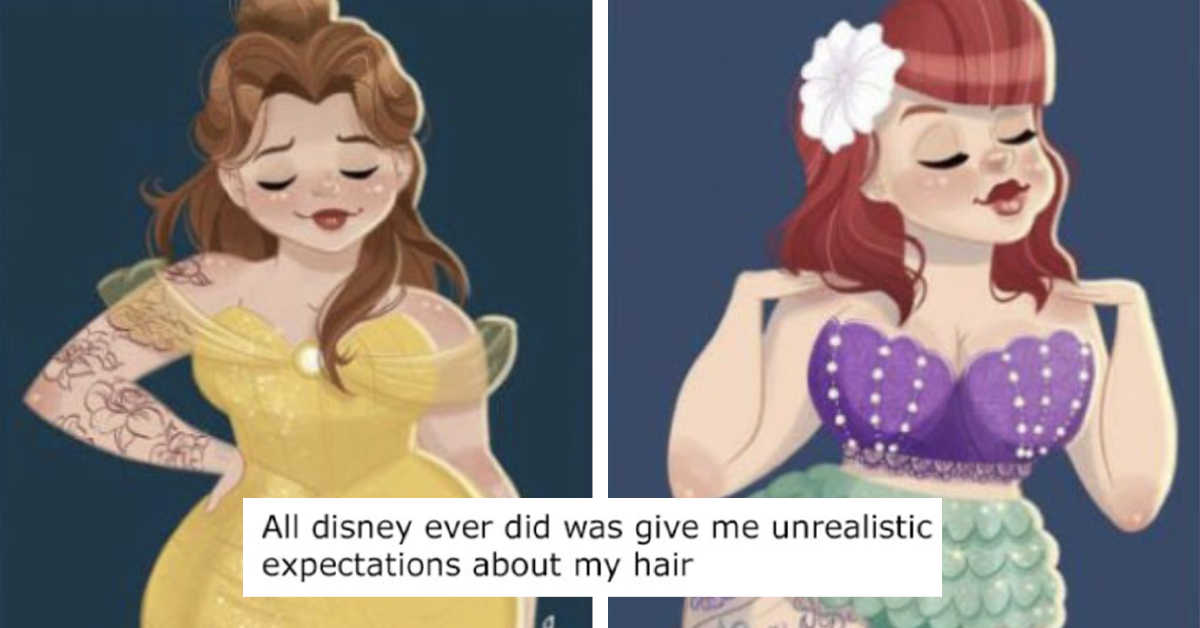
For nearly a century, Disney has woven enchanting tales and introduced us to beloved characters who have become a significant part of our lives. Yet, nestled within these whimsical stories lies a debate that has persisted for years: do Disney's character designs accurately reflect real bodies?
It's a question that ignites passionate discussions among fans, critics, and emerging artists, prompting us to ponder the portrayal of body image in the world of animation. Recently, this debate was reignited when a woman shared her opinion on the matter, prompting a viral response across social media platforms.
It all began with a series of illustrations called Curvy Disney Pinups By Ashley Beevers. These reimagined Disney characters with fuller figures sparked a fresh wave of conversation about body representation in animation.
The woman, whose thoughts went viral, questioned the idea of curvier Disney characters, asking whether a mermaid who swims constantly would realistically have a larger body. Her comments ignited a flurry of responses, with people passionately weighing in on both sides of the argument.
The notion of Disney's "body standards" has been a long-standing topic of discussion. Many argue that the exaggerated proportions of Disney characters perpetuate unrealistic beauty standards, especially for young audiences.
Others contend that these characters are meant to be fantastical and shouldn't be held to the same standards as real-life humans. What's clear is that this debate strikes a chord with people from all walks of life.
It speaks to larger conversations about body image, representation, and the impact of media on societal perceptions. As Disney continues to evolve and adapt to changing cultural norms, the question of realistic body portrayals remains a relevant and contentious issue.
For some, the appeal of Disney lies in its ability to transport viewers to a world of fantasy and imagination. Whether it's a talking mouse or a singing princess, the charm of these characters transcends their physical appearance.
Yet, for others, the lack of diversity in body types can feel exclusionary and out of touch with reality.
Disney's portrayal of body standards has been a hot topic for ages, and this article was the final straw for one woman.
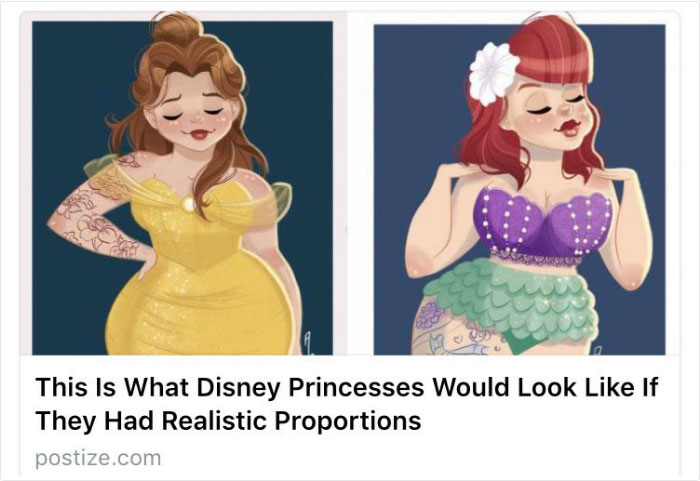
Some argue that Disney princesses are portrayed as physically active and not expected to be overweight.
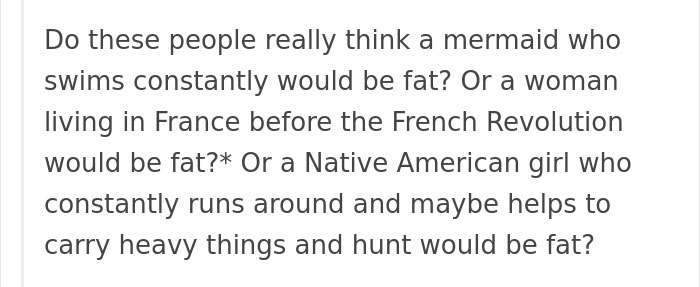
Who gets to define "normal"? Is it considered abnormal to be thin?
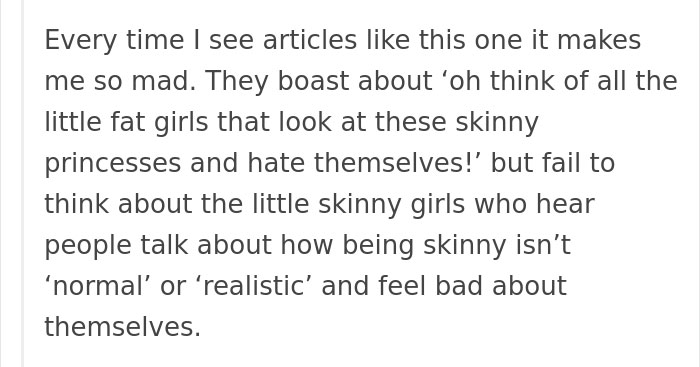
"Realistic proportions" mean the thickness.

"There are two sides to every coin."

Why is it that everything revolves around body proportions?
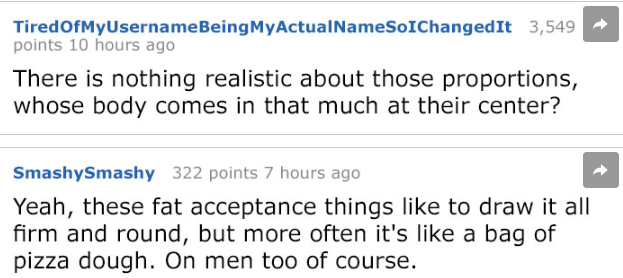
Her bold statement resonated with most people.
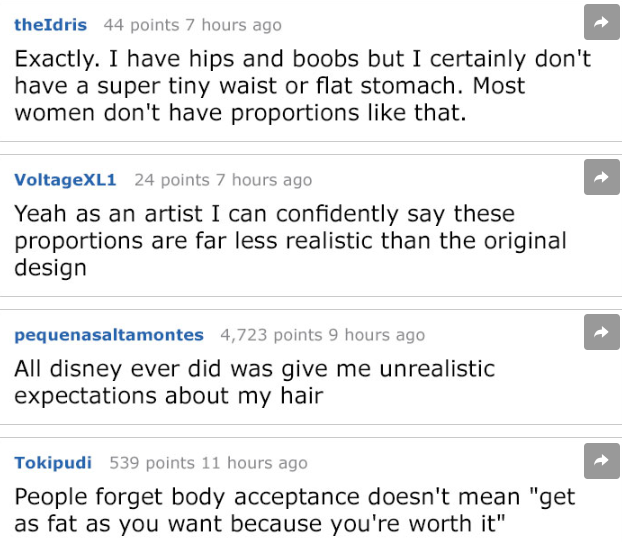
But then again, some folks saw things differently.
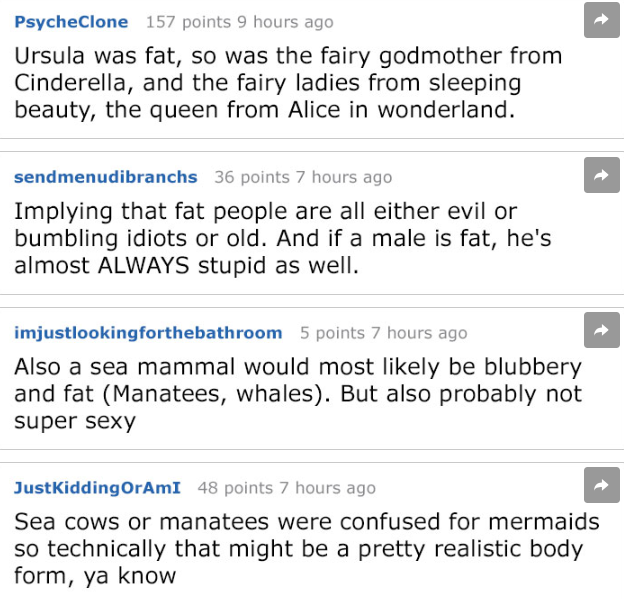
As the discussion around Disney's character designs continues to evolve, it's important to consider the broader implications of representation in media. While there may never be a definitive answer to the question of realistic body portrayals, the conversation itself shapes our perceptions of the world around us.
Whether you believe Disney characters should reflect realistic bodies or remain fantastical creations, one thing is certain: the debate will continue to spark dialogue and provoke thought for years to come. So, what's your take on the matter?

